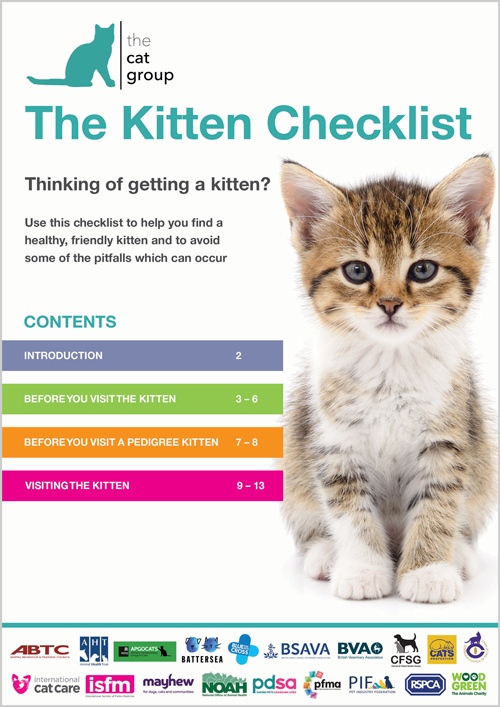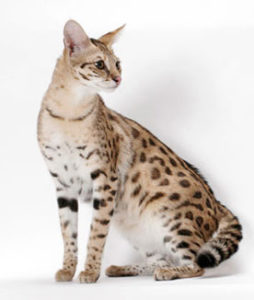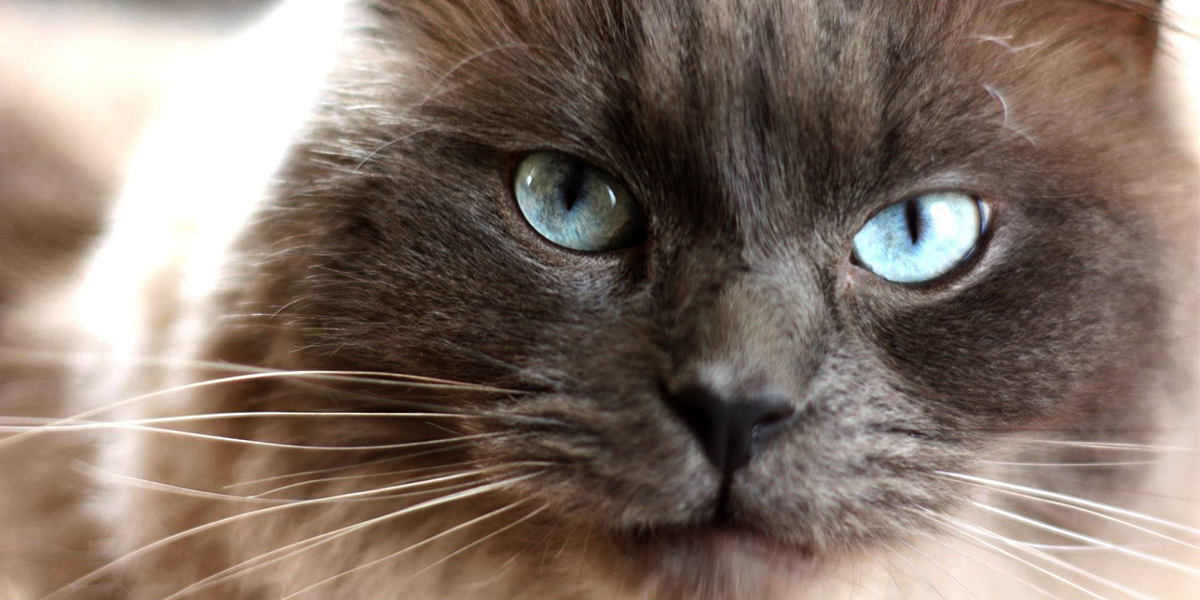Of the millions of cats kept as pets around the world, most will be a result of cats which have bred with each other without human intervention and which are a random mix of the genes which have come together, probably accidentally!
These have different names the world over – non-pedigrees, moggies, domestic shorthair or longhairs, street cats etc. Worldwide they are roughly the same size and shape and will have a selection of coat colours and patterns depending on their parentage. Most will have a short coat and, where cats do have longer coats, they will be able to manage these themselves; cats which are born with coats which are not manageable or robust (eg, those born with sparse or even no hair) are not likely to survive unless helped by man.
What is a pedigree cat?
Pedigree cats have been bred specifically to exhibit particular physical characteristics and may also show some breed-related behaviours (for example Siamese cats are often quite ‘talkative’ and noisy compared to some moggies or some other breeds). Some of the breeds came into being because they developed in an isolated area and certain characteristics became common to all the cats – an example of a naturally occurring pool of genes. To make the breeds we know today, breeders have:
- Taken a naturally occurring group of cats and developed them into a breed
- Taken a cat with a genetic abnormality (such as short legs, folded ears or a lack of coat) and bred them with other cats to develop a breed
- Taken different breeds and mixed them to form a new breed
- Taken a different species and crossed it with domestic cats to form a hybrid breed
Pedigree cats are often considered special in some way – and can cost a large sum of money. However, it is better to think about pedigree cats as different, rather than ‘better’ than non-pedigrees (moggies). While moggies come from a real mix of cats, pedigrees are bred from specific and very similar others all from the same ‘breed’ or with other breeds either within a certain breed standard or to create a new breed. This means that a certain look or colour can be selected for and even some behavioural traits can be more likely to occur. However, it also means that the number of cats available to breed from is much reduced and hence the ‘gene pool’ is not large. So while the look of the cat you are seeking can be pretty much guaranteed, problems can arise because of the limited gene pool. If there are health problems or disorders within this pool, these can be passed on more readily to the next generation – this is what we call inherited disorders. You will find the most common ones referred to under the breeds if relevant.
The ‘look’ or ‘standard’ of some breeds may require what could be considered as extremes of body form – such as very short noses or lack of a tail, which may not be wonderful in terms of the cat’s health.
At International Cat Care we have strong views of some breeds where we feel the health or welfare of the cat is compromised simply for a certain look, and you will find reference to these in our advice section on cat breeds.
Good breeding
It is up to good breeders to be very knowledgeable about cats in general, their own particular breed and any problems which come to light. Good breeders aim to breed healthy, people-friendly cats and avoid (or seek to deal with) inherited disorders which arise.
There are many different breeds, some of which will require extra care and attention, for example, if they have a very long coat or even no coat at all (which does not mean they are more easy to care for).
Different personalities
Many breed lists will wax lyrical about the different personalities of the different breeds. However, personality relies not just on genes but on early experiences in the kitten’s life and for most cats the variation between individuals can be as great as the so-called different personalities of the breeds.
However, simply because breeders may choose friendly people-orientated cats to breed from, the next generations may be more people orientated – this can make very friendly interactive cats. It can mean that such cats are a bit more able to deal with the pressures put on them sometimes by owners looking for a bit of emotional support (not something most cats can deal with very well) but it can also sometimes make cats which are more dependent on their owners than, say a moggie, and some may even suffer from separation anxiety (like dogs) and may benefit from being one of a pair to begin with.
There are also some breed dispositions, such as the Siamese being perhaps the most talkative or noisy breed. Of course some breeds are entirely dependent on their owners for care – for example, the long-haired Persian which cannot keep its coat (with its extra thick undercoat) free from tangles; and at the opposite extreme, the Sphynx (which is virtually hairless) needs bathing and cleaning to deal with the oil which should coat the hair but instead remains on the skin; it also needs protection from sunburn and cannot cope with cold weather outside.
Do your homework
If you do decide to go down the pedigree cat route for your pet, then do your homework, ask the right questions and make sure you choose the breeder and the kitten carefully. See:
Where to get your cat or kitten
Choosing an adult cat
Choosing a kitten
We love all cats, pedigree or moggie, and health must come first – we want you as an owner to have a healthy happy cat which fits with your lifestyle and the relationship is rewarding for both cat and person. It is understandable that people want something different – in shape or coat colour or length – and as long as this can be done without doing harm to the cat, then it is wonderful to enjoy the beauty that is the cat.
However, if our intervention causes health or welfare problems, then we should all think very carefully about perpetuating that line of breed or problem.
 The Kitten Checklist
The Kitten Checklist
The Kitten Checklist has been put together by 20 animal and veterinary organisations, to help you make an informed decision when choosing a kitten. It will help you find a healthy, friendly kitten and avoid some of the pitfalls which can occur.
View/download The Kitten Checklist
Advice on cat breeds
> Advice section on cat breeds
The breeds shown in our section on cat breeds, have a brief description of the look of the cat, but mostly focus on health, and refer to where there may be an inherited problem to take into account.
Where International Cat Care feels there is something serious to consider with the breed, there will be a comment.
We have included the mainstream breeds recognised by many of the cat fancy or pedigree registration bodies and some which are not. This is not because we feel that these should be accepted as breeds – indeed in many cases, we do not. However, anyone who is tempted to consider getting, for example a Dwelf – a shame of a cat bred from a Munchkin, Sphynx and American Curl, should know that each of these breeds comes from a single cat born with a genetic abnormality and made into a ‘breed’ and then the three mixed together.
Because a breed may have been developed based on one or two cats found accidentally in a litter of kittens (for example with no hair), it is said to be ‘natural’ and therefore acceptable – most genetic defects are ‘natural’ but we may not wish to perpetuate them.
Would you prefer to be in the body of a robust moggie or this poor creature with likely health problems from all of the abnormalities involved? It is a shame that people feel the need to produce something novel and want to take the ‘credit’ for developing a new type of cat, no matter what the animal inside that body has to cope with.
Nature has produced one of our most durable, beautiful, successful, healthy and adaptable animals in the non-pedigree cat. If breeders wish to produce something new then they must first do no harm.
If new breeds come along which do not meet this criteria, then we should stand up and say it is not acceptable. At the moment we have fewer problems caused by breeding in the cat world than seen in the dog world – let’s try and not just keep it that way, but lead the way in improving it to ensure the welfare of all the cats involved and to prevent suffering which can come from irresponsible breeding.
Hybrids
 A final word on hybrid breeds – those made by crossing the domestic cat Felis catus, with other wild breeds. For example, the Savannah (pictured right) is a cross between the Serval and a domestic cat.
A final word on hybrid breeds – those made by crossing the domestic cat Felis catus, with other wild breeds. For example, the Savannah (pictured right) is a cross between the Serval and a domestic cat.
While this crossing may produce a large and attractive looking cat, there are many concerns and unknowns about the temperament, behaviour and safety of these cats in a home setting; effect on wildlife if they get outside, the welfare of the female domestic cats used to breed with a much larger wild male cat, as well as the welfare of the wild cats and the early crosses which cannot be kept as pets and so must be kept in captivity.
We have many beautiful cats already – International Cat Care does not condone the creation of hybrid breeds for these reasons.
> International Cat Care’s Position Statement on Breeding Pedigree cats
Thank you for visiting our website, we hope you have found our information useful.
All our advice is freely accessible to everyone, wherever you are in the world. However, as a charity, we need your support to enable us to keep delivering high quality and up to date information for everyone. Please consider making a contribution, big or small, to keep our content free, accurate and relevant.
Support International Cat Care from as little £3
Thank you.
Donate Now


